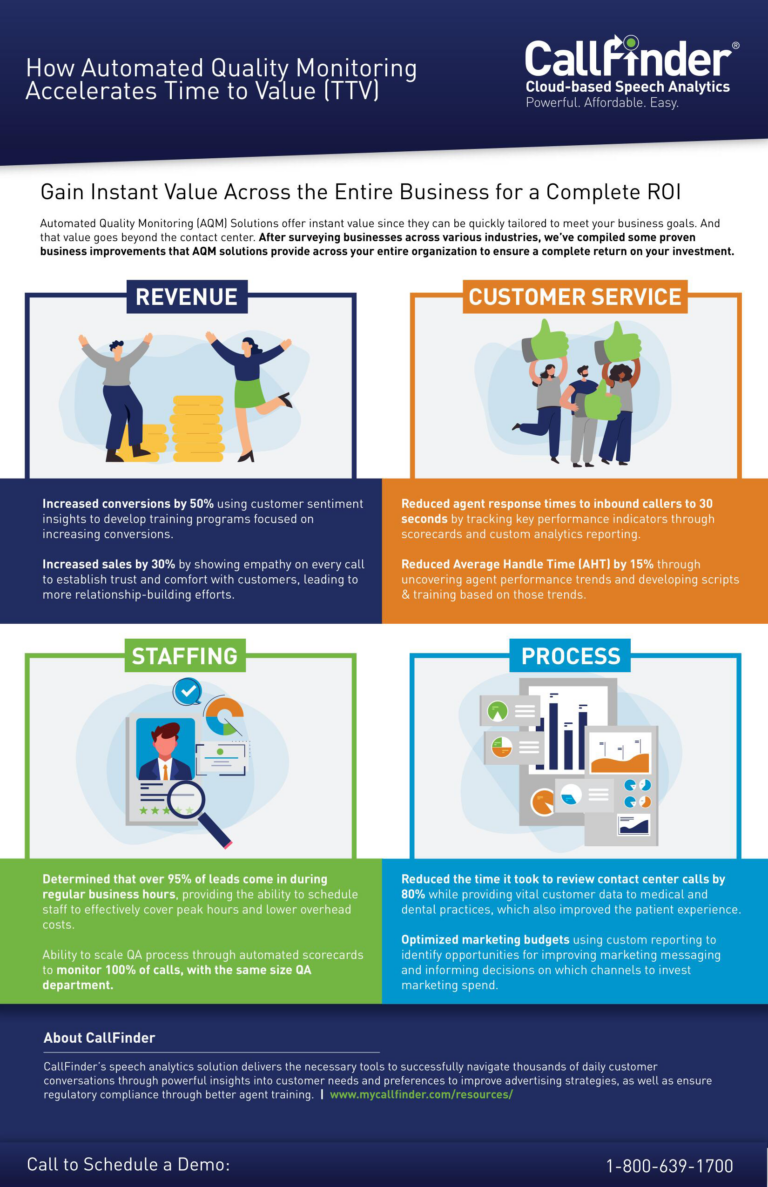Why Companies Should Care About Customer Experience (CX)
Studies show that customers typically tell 15 people about a poor service experience, versus the 11 people they tell when they have a positive experience. Additionally, according to a poll conducted by American Express, “33% of Americans say they’ll consider switching companies after just a single instance of poor service.”
Even though you can find similar stats all over the web, many companies still do not monitor the customer experience. For companies that fail to put CX at the forefront of their culture, both new and existing customers will seek alternatives when searching for a product or service. That’s why it’s vital for companies to understand their customers’ needs and how to provide a high level of service.
In our last post, we gave you the basics of monitoring the customer experience. This week, we’re providing 7 CX mistakes that you’re probably making right now, and how to avoid them. Even if you think you’re at the top of your CX game, reading this post is good practice for ensuring that you’re monitoring agents for common pitfalls.
1. Not Coaching Agents on Active Listening Skills
Call center agents simply must use active listening skills. For instance, when a call center agent attempts to solve the customer’s problem before fully understanding it, the agent is not actively listening to the customer. And when customers aren’t given the opportunity to fully express their situation, they don’t feel heard.
More often than not, this leads to frustration, which then leads to churn. That’s why coaching agents to use active listening skills is such an important part of delivering an exceptional experience. Automated tools, such as silence and overtalk detection, provide an easy way for managers to determine which agents need further training on listening skills.
2. Not Answering Calls in a Timely Manner
No one wants to wait very long for a live person to pick up the phone. Sending calls to voicemail or putting customers on hold can lower satisfaction scores and a customer’s confidence in the company. When customers have to wait for an extended period of time for an answer to a simple question, it implies that the company doesn’t care about their customers’ time. Plus, when a company doesn’t provide enough call center staff to appropriately handle their call volume, it reflects poorly on the organization as a whole.
3. Transferring customers multiple times
Just as customers do not want to be put on hold, they do not want to be transferred multiple times. Endless transfers and extended hold times are the most common causes of a frustrating customer experience. In fact, over 50% of customers list “too many transfers” as the number one cause for a poor service experience.
4. Too Many Automated Options
Automated phone systems that are overly complicated or broken tend to enrage customers. Like many of us, your customers don’t have time to figure out which of the 8 options fits their situation. Multiple menu choices without an option to speak with a live agent put all the work on your customer. Remember, they called you to resolve their issue.
5. Providing no after-call follow-up
Another common mistake is not following up when a customer’s reason for calling isn’t resolved, or an order is delayed. You can easily avoid this by providing the customer with updates and a resolution after the initial call. And again, monitoring your CX is the easiest way to keep customers satisfied and aware of any changes or issues that arise.
6. Not taking notes
Customers expect agents to have an understanding of previous calls rather than asking the customer to repeat why they are calling. When agents have to do extra leg work, it can lead to long hold times and multiple transfers, which have been established as mistakes. Agents should take copious notes so that they understand why the customer is calling as soon as they pick up the call. In addition, this takes away time that the agent could be helping the next caller.
7. Not rewarding agents
This is a huge mistake that many companies don’t even think about. While it’s important to empower agents to make positive changes, you must also reward them for their successes. Once managers recognize the necessity for continued training, call center agents can continue to learn from their mistakes and improve throughout their careers.
A one-time training doesn’t target areas for improvement, and it doesn’t provide opportunities for a reward system. By implementing continual training, call center agents are able to understand the company’s goals. And managers can keep them engaged, which ultimately reduces agent churn.
Closing Thoughts
When evaluating the customer experience, many companies make the mistake of asking customers whether their experience was good or bad. However, this approach often fails because it only provides a piece of the puzzle. By understanding the areas in which a call center falls short, companies can increase customer satisfaction and ensure customer retention.











